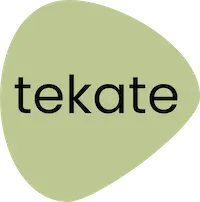Optimising Internal Information Flow for the UNHCR
Background
Intranet Transformation for a Global Humanitarian Agency
Established by the United Nations General Assembly on December 14, 1950, the Office of the United Nations High Commissioner for Refugees (UNHCR) spearheads and coordinates global efforts to safeguard and support refugees, working to resolve their displacement challenges. Its fundamental mission is to protect the rights and well-being of displaced individuals, ensuring everyone can seek and find safe refuge, with options for voluntary return, local integration, or resettlement in a third country. Over more than five decades, UNHCR has empowered an estimat-
ed 50 million people to rebuild their lives. Today, a dedicated team of roughly 6,300 staff in over 110 nations continues to assist more than 32 million individuals.


The Challenge
Enhancing Global Intranet Connectivity and Knowledge Management
The UNHCR intranet is used by over 1,200 staff in Geneva, and in more than half of UNHCR’s field offices – approximately 200 locations, reaching at least 4,000 staff outside of Headquarters. The time zone span ranges from Canberra and Tokyo in the
East to Washington D.C. and Caracas in the West. Branch office connections ranged from fractional T1 lines to 18.8kbps dialups, and in extreme cases through portable commercial satellite telephones. Many offices in locations with poor host-country
infrastructure connected via UNHCR’s private PAMA satellite network.
The UNHCR wished to embark upon a major redesign of the intranet in order to improve the dissemination of information throughout the organisation, to encourage the use of the intranet as a primary channel for knowledge management, to act as a gateway to repositories of structured information and to provide universal access to portals into other enterprise systems.
The Solution
Expert Consultancy for Intranet Redesign and CMS Implementation
As a crucial first step in this ambitious redesign, the UNHCR Intranet Services Unit in Geneva enlisted our firm as consultants, valuing our demonstrated expertise in planning complex intranet redesign projects and in the selection and effective utilisation of Content Management Systems (CMS). We collaborated closely with the Intranet Services Unit to develop a comprehensive project plan. This detailed document meticulously outlined the major activities, specific tasks, interdependencies, timelines, and resource requirements essential for both the UNHCR intranet’s redesign and the successful implementation of a new CMS.
The outcome of our engagement was a robust project document that served as a clear roadmap for the UNHCR intranet’s transformation. This document precisely identified all key activities, tasks, dependencies, timelines, and resource needs. Crucially, it also pinpointed potential risks and proposed effective mitigation strategies for both the intranet redesign and the CMS deployment.
To achieve this, we leveraged our proven methodologies, specifically tailored for:
- Defining functional requirements for the site’s redesign.
- Establishing functional requirements for a new CMS.
- Conducting a comprehensive market survey for CMS products, which included evaluating candidate solutions and performing a thorough scope/gap analysis.
Beyond these core deliverables, we provided strategic advice and consultation on integrating a CMS within a broader Knowledge Management strategy. Separately, we conducted a detailed review of PeopleSoft Enterprise Portal v.8, identifying potential integration points with the newly redesigned intranet in general, and with the chosen CMS in particular.
Conclusion
A Clear Path Forward for UNHCR’s Digital Workplace

With our support, UNHCR now possesses a well-defined and comprehensive approach for the redesign of its intranet. The UNHCR Intranet Unit is now equipped to precisely articulate and manage all major activities, tasks, dependencies, timelines,
and resource requirements, ensuring a structured and successful path for their digital workplace evolution.
